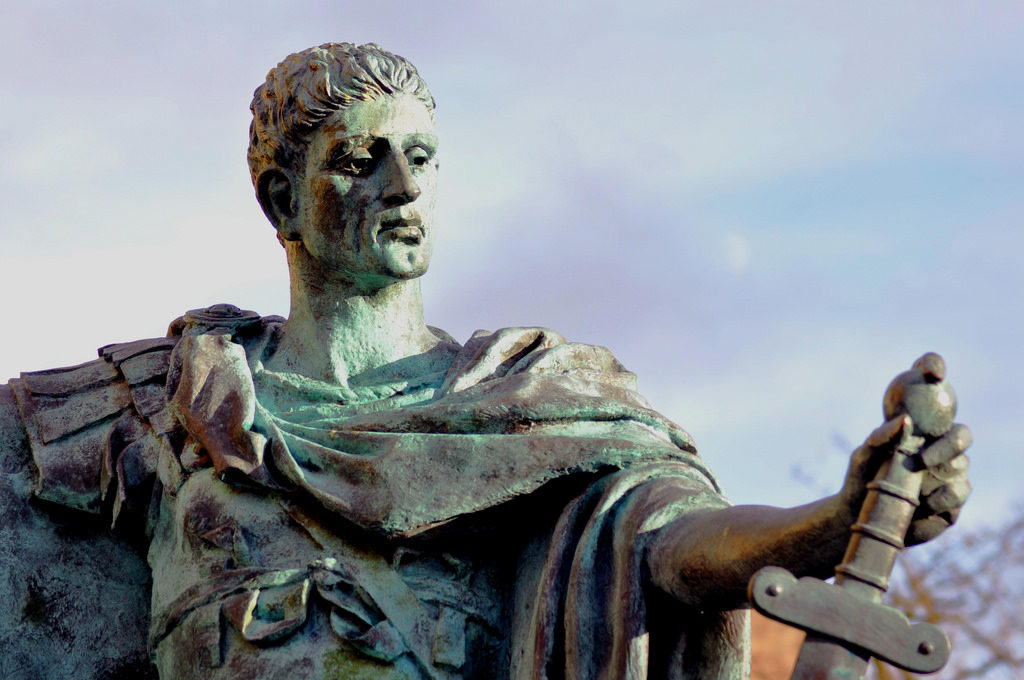
Emperor Diocletian decided to retire in April 305, assuming
that the system for sharing imperial authority that he had set up would
continue along the same lines. However, things did not run as smoothly
as he had hoped.
Diocletian had split the empire into twelve “dioceses”, with
each of four “tetrarchs” running three of them apiece. He and Maximian were the
two senior tetrarchs, with Constantius and Galerius being subservient to them.
Diocletian’s plan was for Maximian and himself to retire at the same time, with
Constantius and Galerius moving up to fill the senior positions (“Augusti”) and
two new men being appointed to be junior emperors (“Caesares”).
The original thought had been that the sons of Constantius
and Maximian, namely Constantine and Maxentius respectively, would be the new Caesars,
but Diocletian changed his mind on this. He subsequently announced that the new
junior emperors-in-waiting would be a general named Flavius Valerius Severus
and Maximinus Daia, who was a nephew of Galerius.
The problem was that not all the new men who took office on
1st May 305 were content with what Diocletian had decreed. In
particular, Constantius was annoyed that his son Constantine had been excluded
from the succession.
It was not long before this source of dissent turned from
being a potential problem to an actual one. Constantius was responsible for
Britain and it was while he was in Britain in July 306 that he died at Eboracum
(York). The army, presumably following the expressed wish of Constantius,
declared Constantine to be the new emperor.
Meanwhile Maxentius, who was the other man to lose out when
Diocletian changed his mind about the succession, refused to let matters lie
and claimed the position that Diocletian had assigned to Severus. His father
Maximian gave him his support, which was essential in deciding the issue
because the army, which had served under Maximian, refused to back Severus who
was imprisoned and eventually killed.
In 307 Galerius invaded Italy, hoping to defeat Maxentius
and restore the arrangement that Diocletian had decreed. Constantine refused to
take sides and Rome, protected by the walls erected 30 years previously by
Aurelian and Probus, proved to be capable of withstanding a siege. Galerius had
no choice but to withdraw.
On the other hand, Galerius did have a powerful friend to
call upon for help, namely Diocletian who was quietly growing cabbages on his
estate at Split (in modern Croatia). A conference was called in 308 at
Carnuntum (in modern Austria), under the chairmanship of Diocletian, at which
it was agreed that Constantine could continue to rule the regions he already
controlled and Galerius would continue as the other senior emperor. A new
junior emperor was appointed to replace Severus, this being a general named
Licinius.
With civil war avoided, Diocletian went back to his
vegetables and Galerius was happy to be recognized as the most powerful person
in the empire. Unfortunately for him, he only lived to enjoy this status for
another three years, dying of natural causes (a very nasty case of bowel
cancer) in May 311.
The surviving emperors, who now all regarded themselves as
Augusti rather than Caesares, then divided into two factions, Maximinus allying
himself with Maxentius and Constantine with Licinius. One result of
Diocletian’s reforms had been that the army, as well as the government, had
split into what were virtually independent camps that were loyal to one or
other of the tetrarchs. The result was that each of the four men controlled
roughly equal forces, so any power struggle was likely to result in a highly
destructive civil war.
In the event, the struggle boiled down to a contest between
Constantine and Maxentius. Constantine was a strange character who exhibited a
range of personality traits, one of which was a deep belief in divine
intervention. The question was, which god to trust? He had long been a devotee
of Sol Invictus – also known as Elagabal, the Syrian sun god who had originally
been introduced to Rome by Elagabalus and then re-introduced by Aurelian. Constantine
now decided to place his trust in the Christian god.
The story of Constantine’s conversion has become a legend,
not least because of the profound implication it would have for the growth of
Christianity as well as the later history of the Roman Empire. The truth of
what happened is less easy to ascertain. However, the fact remains that
Constantine was able to defeat Maxentius, and he ascribed his victory to what
he termed the “Divine Mind”.
After the final battle with Maxentius at the Milvian Bridge
on 28th October 313, at which Maxentius was killed, Constantine was
clearly the most dominant figure in Roman politics, and the Tetrarchy, such as
it now was, was no longer a government by equal parties.
© John Welford
No comments:
Post a Comment